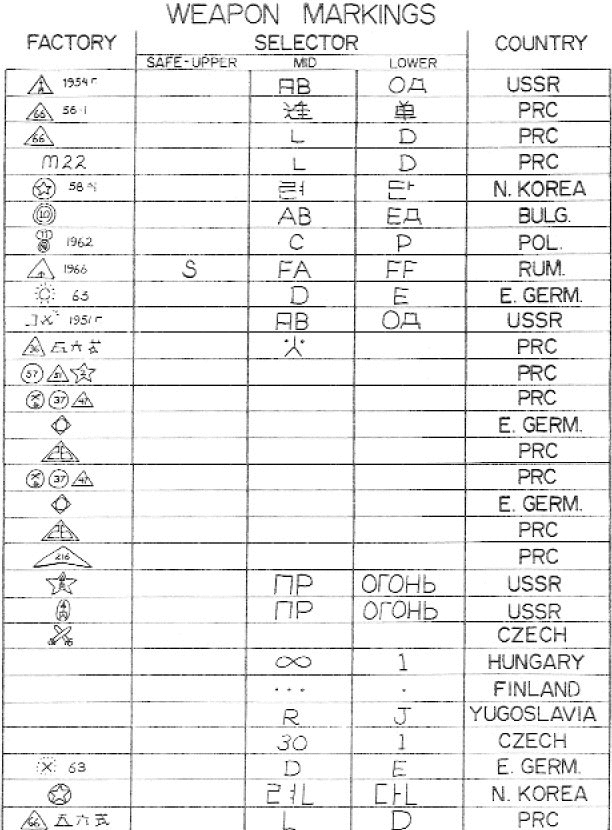

The AK-47, as we know it, was created by Russian weapons designer Mikhail Timofeyevich Kalashnikov in 1947. Its name is derived from the word ‘automatic’ (A), the inventor’s last initial (K), and the year of its invention (47). The AK-47 was designed to be easy to operate, able to fire in any clime, durable, and mass produced quickly and cheaply. It was adopted into USSR military service in 1949 and quickly became a symbol of Soviet reach around the world.
It has a muzzle velocity of about 700 meters per second, can fire 600-rounds-per-minute at the cyclic rate, and hold a 30-round magazine of 7.62mm ammunition. The biggest issue with the weapon is accuracy, which is the result of large internal parts and powerful caliber rounds that reduce the max effective range to roughly 400m. Despite this weakness, the AK-47 has successfully infected many countries and facilitated the proliferation of communism and terror around the world.
Let’s learn more about this prominent tool of destruction:

Cycle of operations
The AK-47 is a fighter favorite around the world because its cycle of operations (the way it fires) is simple, made up of (relatively) large pieces that allow it to fire even when covered in sand or mud.
When the operator pulls the trigger, he/she releases the firing hammer, which strikes the firing pin. This action ignites the bullet primer which, in turn, ignites the gunpowder to fire the bullet. The gas that propels the bullet forward also pushes back on the bolt carrier assembly, ejecting the empty casing. This action also resets the hammer into firing position.
The bolt pulls a new round up from the magazine and inserts it into the barrel. The sear keeps the bolt hammer in place until the bolt carrier returns into position.

Manufacture
There are an estimated 75 to 100 million AK-47s worldwide and, in some countries, one can be purchased for under . Generally, the price ranges from between 0 to 0, but higher-end models can run over id=”listicle-2624527860″,000. Russia has large stockpiles of the weapon, but no longer manufactures it. There are, however, 20 countries that still do, including China. According to the AK-47’s Operators Manual, the weapon system’s country of origin can be identified by markings on the weapon itself.
In addition to the Soviet Union, the People’s Republic of China, East Germany, Poland, Bulgaria, Romania, North Korea, Hungary, and Yugoslavia have manufactured the AK-47. The selector markings on the right side of the receiver provide a ready means of identifying the country of origin

So simple a child could use it — and they do
In the U.S. Armed Forces, troops are trained to disassemble and reassemble their weapon systems to identify any catastrophic failures or jams. This is a good exercise when you find yourself with a little downtime, and it’s been known to strike up a friendly race between troops or platoons.
In Russia, children are trained to disassemble and reassemble weapons in a similar fashion. They may not have enough funding to feed or house their own people, but they will spare no expense at preparing for a Western invasion. Take your training seriously because the Russians definitely are:
